

Navigation Lights
- You are required to display the appropriate lights at night or during times of reduced visibility.
Navigation lights are used to prevent collisions at night or in times of reduced visibility, and are an essential tool in keeping you and your vessel safe. Nav lights allow you to see other nearby vessels, and allow other vessels to see you.
Nav lights also provide information about the size, activity, and direction of travel. By understanding the characteristics of Nav lights, you can determine an appropriate course of action as you approach another vessel.
On any vessel, navigation lights have a specific color, (white, red, green, yellow, blue), arc of illumination, range of visibility, and location, as required by law and regulations. For the purposes of this course, we will concentrate on pleasure boats under 65 feet in length. Knowledge of navigation lights is important to a small-boat skipper for separate, but important, reasons.
- You are legally responsible for displaying lights of the proper color, intensity, location and visibility on your boat.
- Knowing the type and heading of another boat.
Legal Requirements
Vessels are required to show the proper navigation lights from sunset to sunrise in all weather conditions, good and bad. During these times, no other lights that could be mistaken for lights specified in the Rules of the Road can be displayed, nor any lights that impair the visibility or distinctive character of navigation lights, or interfere with the keeping of a proper lookout. The Rules also state that navigation lights must be shown in conditions of reduced visibility, and may be shown at other times considered necessary.
It's Your Responsibility
It is the responsibility of the owner/operator of a vessel that she show the proper navigation lights for her size and the waters in which she is operating. It is not the responsibility of the manufacturer, importer, or selling dealer. Many boats are delivered with lights that do not meet legal requirements with respect to technical characteristics or placement on the vessel. Remember also, that the angles of visibility must be met when the boat is underway-if your boat rides at a significant bow-up angle, take that into consideration when installing and/or checking your lights.
Navigation Lights for Powerboats
Power driven vessels underway shall exhibit a masthead light forward, sidelights and a stern light. Vessels less than 12 meters in length may exhibit an all around white light and side lights. Power driven boats on the Great Lakes may carry an all around white light in stead of a second masthead light and stern light combination.

Sidelights - Colored lights - red on port and green on starboard - showing an unbroken arc of the horizon of 112.5 degrees, from dead ahead to 22.5 degrees abaft the beam on each side.
Combination lights - Sidelights may be combined in a single fixture carried at the centerline of the vessel.
Stern light - A white light showing over an unbroken arc of the horizon of 135 degrees, centered on dead astern.
Navigation Lights for Sailing
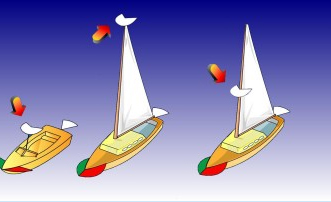
A sailing vessel of less than 7 meters in length shall, if practicable, exhibit regular navigation lights, but if not practical, she shall have ready at hand an electric torch or lantern showing a white light which shall be exhibited in sufficient time to prevent collision.
Diving Lights
Another light display that you may see in resort areas, or waters that have wrecks or reefs, is the night diving configuration. This has three vertical masthead lights, that have a red-white-red sequence. You must maintain a good distance from these vessels, and you should also be aware that there may be divers near you.
Interpreting what you see

It's great that you're learning the basics of lights - what is required and when they're required. But, this in only the beginning. You must also learn how to interpret the navigation lights that you see when you are underway at night- and for your safety-learn it well.
For instance, if you see a vessel approaching that shows a light pattern such as the ones to the right, you immediately know that you are in a crossing situation, and that you must yield to the other vessel - that's why it is red.

Seeing a green light over a white light indicates a fishing vessel actively trawling. You not only need to avoid the vessel, but you also need to remember that it could potentially have a very large net deployed that you will also need to avoid.
And there are numerous other lights and combinations of lights that you must be able to instantly recognize - the lights for a sailboat that is privileged over a motorboat, the special lights of various fishing vessels, a dredge or a vessel not under command. Study the requirements for navigation from the viewpoint of a "looker" as well as a boat owner.
Boat Navigation Lights Rules: Illustrated Beginners Guide
Boat navigation lights are crucial for safe boating, especially during low visibility conditions such as at night, in fog, or heavy rain. Understanding the rules governing navigation lights is essential for all boaters, whether you’re a seasoned mariner or a beginner on the water. In this illustrated guide, we’ll break down the basics of boat navigation lights, explain their purpose, and outline the legal requirements you need to follow.
Why Are Navigation Lights Important?
Navigation lights serve two primary purposes:
- Communication: They help you signal your presence, direction, and activity to other boaters. For example, different light configurations can indicate whether you are under sail, anchored, or actively moving.
- Safety: By making your boat visible and helping you identify the position, type, and activity of other vessels, navigation lights prevent collisions, especially in low-visibility conditions.
Types of Navigation Lights
There are specific lights for different types of boats and situations, each with a unique purpose and color code. Here’s a breakdown of the common navigation lights used on recreational boats:
1. Sidelights (Port and Starboard Lights)
- Color: Red for port (left) side, green for starboard (right) side.
- Purpose: These lights help other vessels determine your boat’s direction. If you see a red light, you know the boat is passing from your left; if you see a green light, it’s passing from your right.
2. Stern Light
- Color: White.
- Purpose: A stern light is mounted at the back of the boat and shines a white light over a 135-degree arc facing aft (backwards). This indicates the vessel’s direction to others behind you.
3. Masthead Light
- Purpose: Found on power-driven vessels, the masthead light shines forward and to both sides over a 225-degree arc. It helps other vessels see you when you are under power.
4. All-Round White Light (Anchor Light)
- Purpose: An all-round light shines over a 360-degree arc and is used when a vessel is at anchor, signaling that the boat is stationary. On smaller boats, this light often doubles as a combined masthead and stern light when underway.
5. Towing Light
- Color: Yellow.
- Purpose: Used on vessels that are towing or pushing another vessel. A towing light is mounted at the stern and shines aft over a 135-degree arc, similar to a stern light but in yellow.
Boat Navigation Light Configurations
Different boat types and situations require specific light configurations. Let’s look at the most common setups for both power-driven and sailing vessels.
Power-Driven Vessels Underway
For boats that are motorized (including sailboats operating under power), the following lights must be used when underway:
- Masthead Light : Positioned at the front or near the bow, this white light must be visible over a 225-degree arc and indicate that the vessel is powered.
- Sidelights : Red and green lights (port and starboard).
- Stern Light : Positioned at the stern and visible over a 135-degree arc.
Sailing Vessels Underway
Sailing vessels not under power use different light configurations:
- Sidelights : Red and green lights on the port and starboard sides.
- Stern Light : A white light at the rear visible from behind.
- Optional Tri-Color Light : Some sailing vessels may opt for a tri-color light at the top of the mast, combining red (port), green (starboard), and white (stern) into one unit.
Note: If a sailboat is under both sail and power, it must display the same lights as a power-driven vessel.
Boats at Anchor
When anchored, the boat must display an all-round white light visible from all directions. This light signals that the vessel is stationary, and other boats should navigate around it.
Special Situations
- Vessels Towing or Being Towed : Must display yellow towing lights in addition to their regular navigation lights.
- Vessels Engaged in Fishing : Special lighting rules apply to commercial fishing boats or vessels using nets or other equipment.
Navigation Light Visibility Requirements
For safety reasons, it’s important that your navigation lights are visible from a specified distance. The minimum visibility distances vary depending on the size and type of the boat.
| Under 12 meters | 2 miles | 1 mile | 2 miles |
| 12 to 50 meters | 5 miles (on larger vessels) | 2 miles | 2 miles |
| Over 50 meters | 6 miles | 3 miles | 3 miles |
Ensure your lights meet these visibility requirements by regularly cleaning and checking them for proper function.
Legal Requirements for Navigation Lights
Navigation lights are regulated under both international ( COLREGS ) and local laws, which are enforced by maritime authorities such as the U.S. Coast Guard. Here are some essential legal requirements:
- When to Use Navigation Lights : You are legally required to use your navigation lights from sunset to sunrise and in conditions of restricted visibility (e.g., fog, heavy rain).
- Proper Installation : Lights must be installed in the correct positions and must not be obscured by any part of the boat’s structure.
- Battery Power : Ensure that your boat’s electrical system or portable battery-operated lights have enough charge to last through the night or extended periods of poor visibility.
Failure to comply with navigation light rules can result in fines, accidents, or even loss of life due to collisions.
Common Mistakes and How to Avoid Them
- Incorrect Colors or Placement : Make sure your port (left) light is red and your starboard (right) light is green. These lights must be clearly visible and not blocked by equipment.
- Using Incorrect Lights While Anchored : At anchor, many boaters make the mistake of not using an all-round white light, which can lead to dangerous situations where other boats cannot see you.
- Assuming Other Boats Will See You : Always assume other boaters might not spot you, especially in crowded or busy waterways. Make sure your lights are on and functional.
Understanding and following navigation light rules is essential for safe boating. Whether you’re heading out at night, in fog, or just cruising at dusk, your boat’s lights ensure that other boaters can see and identify you on the water. By adhering to the right configurations for your vessel type, using the correct lights for different scenarios, and ensuring your lights are visible, you can navigate safely and avoid accidents.
Before your next outing, take a moment to inspect your boat’s lights, familiarize yourself with their functions, and make sure you’re fully compliant with maritime regulations . Safe boating is everyone’s responsibility, and knowing the rules for navigation lights is a critical part of it.
Happy boating, and stay illuminated!
Illustrations : Insert clear, simple diagrams showing the position of navigation lights on different types of vessels for quick reference.
Happy Boating!
Share Boat Navigation Lights Rules: Illustrated Beginners Guide with your friends and leave a comment below with your thoughts.
Read Boat Insurance Should Cover These 10 Basic Things until we meet in the next article.
Similar Posts
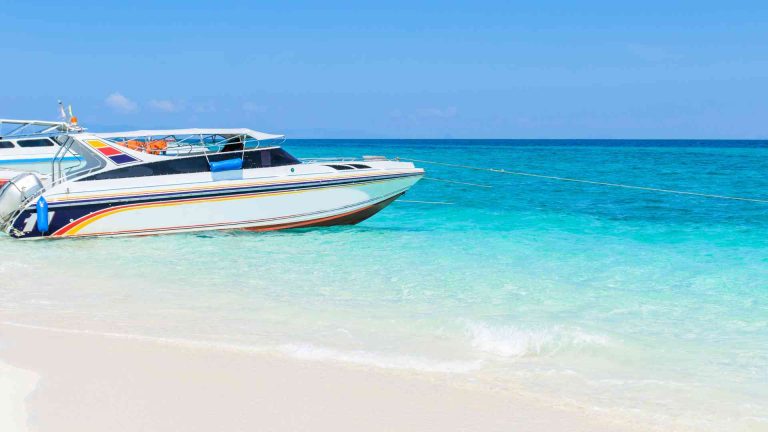
6 Advantages of a Stepped Hull Design for High-Speed Boats
In the exhilarating world of boating, the pursuit of speed has long captivated enthusiasts and adventurers alike. The symphony of wind, water, and power converges to create a sensation that is both electrifying and freeing. Amidst this quest for velocity, hull design emerges as a pivotal element, capable of unlocking new dimensions of performance. In…

Exploring Boats as a Family: A Comprehensive Guide
Boating as a family is one of the most exciting ways to bond, explore nature, and create lasting memories. Whether it’s a day out on a serene lake, cruising along the coastline, or embarking on a fishing trip, boating offers experiences that cater to a wide range of interests. For those new to the boating…

Performance and Features of the Mercury Black Max 200
In the vast expanse of marine engines, a name resonates with power, performance, and boating excellence – the Mercury Black Max 200 outboard motor. With a legacy etched in the waves and a reputation that commands attention, the Black Max 200 has become the heartbeat of boating enthusiasts around the world. Within the hum of…


Pontoon Boat Front Bumper: Guide to Choose
Your pontoon boat is an oasis of relaxation on the water. Cruising, sunbathing, and creating memories with friends and family are all part of the pontooning experience. But even the most idyllic day on the water can be marred by a bump against a dock, piling, or another vessel. That’s where a pontoon boat front…
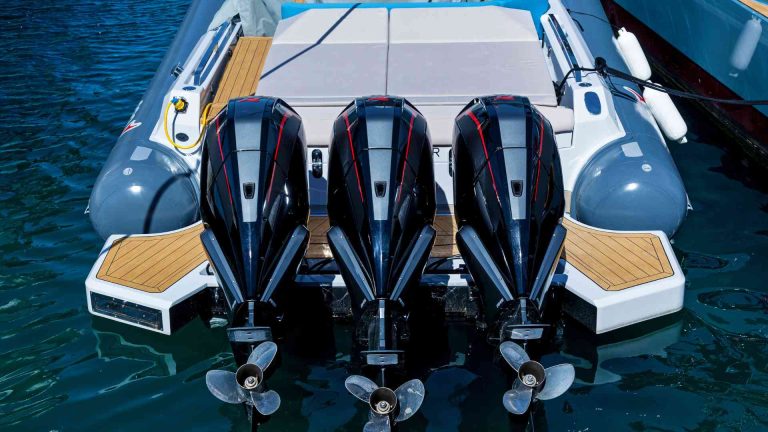
Outboard Motor Runs Fine, Then Loses Power: What Causes?
Picture this: you’re out on the water, the sun is shining, and you’re enjoying a perfect day of boating. Suddenly, your outboard motor sputters, loses power, and leaves you adrift. It’s a scenario that every boater dreads – the frustration of an outboard motor that was running smoothly one moment and then inexplicably loses power…
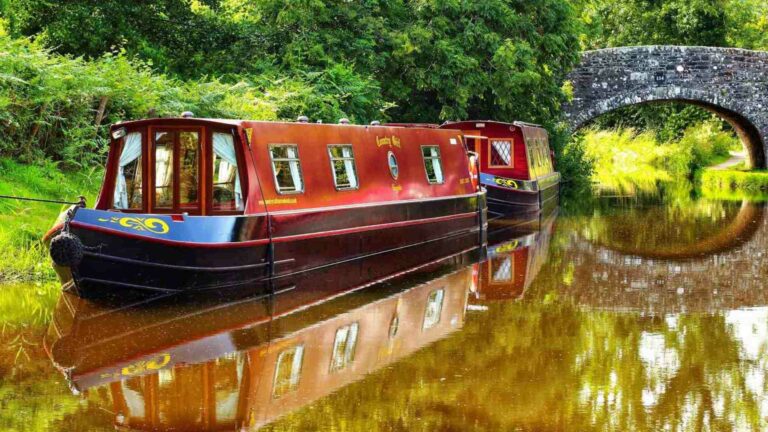
English Canal Boat: for Enthusiasts and Potential Buyers
English canal boats, also known as narrowboats, are an iconic feature of the British waterways. These long, slender vessels are designed specifically for navigating the narrow canals of England and Wales, offering a unique way to explore the picturesque countryside. In this article, we’ll delve into the history, design, and practicalities of owning a canal…
Boat Navigation Lights Rules: Illustrated Beginners Guide
When navigating at night, the lights on other boats are your first clue about the moving dangers around you. And your navigation lights are your first line of safety in avoiding collisions in the dark, and they tell others vessels what you are and what you are doing. The rules sound complex, but with a little understanding you can get the basics for any situation.
So what are the basic navigation light rules? For most small vessels, motoring requires red and green (port and starboard) lights, and a white light visible in all directions around the boat. This is almost always a stern light and a masthead light on sailboats. Boats under sail require port and starboard lights, and a white stern light. Sailboats below sixty-five feet may show a tricolor light at the masthead instead of side and stern lights when sailing.
That's it, in a nutshell. There's a little more to it, as the rules change with different sizes and there are some specifics about angles of display for the colors. Identifying other ships at sea requires more study, but the basics are the same. And it's not much trouble to make sure you've always got the proper lights on your vessel.
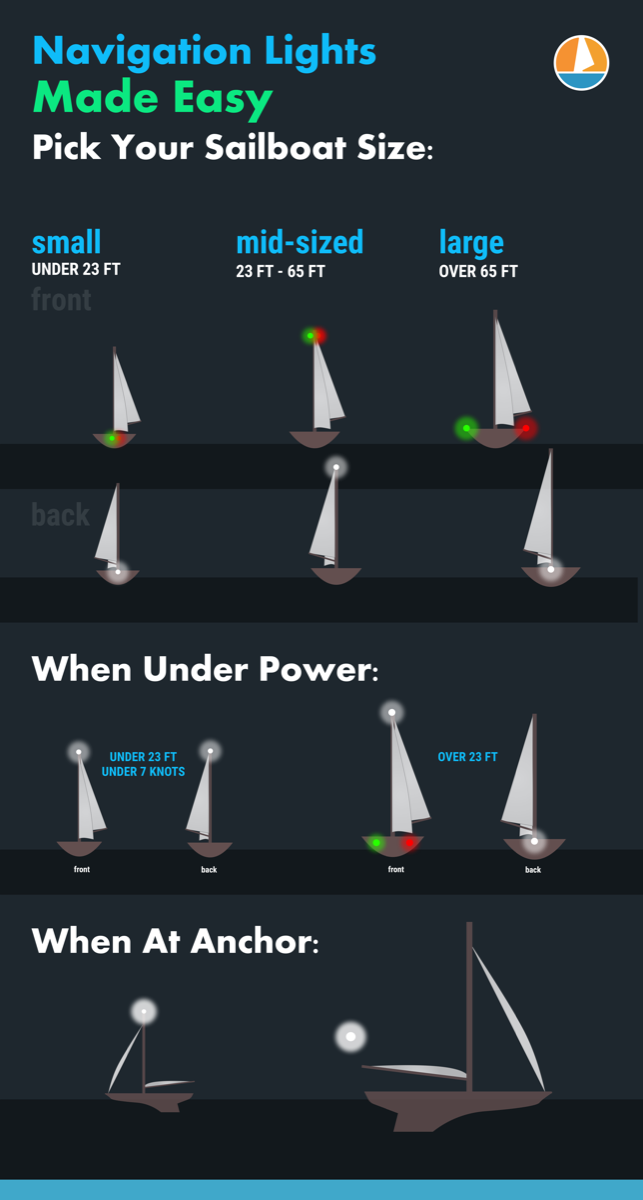
On this page:
What are the official colregs rules for your sailboat, what about the uscg (united states coast guard) rules, lighting at anchor, identifying the boats around you.
The International Regulations for the Prevention of Collision at Sea , abbreviated "COLREGS" is very specific about the lights required, their shapes and sizes, and the distance they must be visible. For the smaller boat, the following definitions apply.
- Masthead Light - a white light placed centerline on the boat showing an arc of 225 degrees with 112.5 degrees either side of the front of the vessel.
- Sidelights - A red light on the port side and a green light on the starboard. They must show an arc of 112.5 degrees from centerline of the bow.
- Stern light - A white light on the stern of the boat showing an unbroken arc of 135 degrees from centerline of the vessel.
- All-round light - A light showing in an unbroken arc of 360 degrees.
The good news is you need not measure these angles. Any properly installed USCG or COLREGS approved light which will cover the correct arcs. If you have to replace the original light from your boat, make sure it's with an approved replacement.
Lights When Sailing
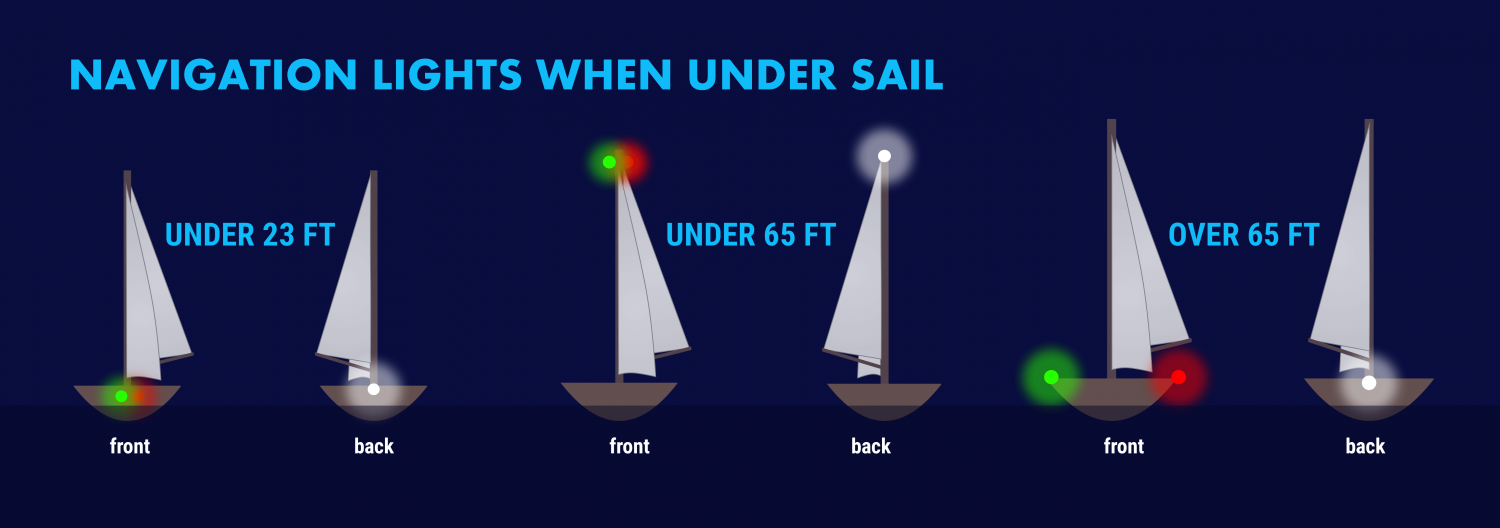
The specific rules for a sailboat under sail are in COLREGS Rule 25 and vary slightly with the size of the boat. A sailboat powering is considered a power boat and falls under in Rule 23.
- Under 23 feet (7 meters) - side lights and a stern light, possible. If these lights can not be displayed a light must be kept at hand to help avoid a collision. This can be a bright flashlight.
- Over 23 feet - Side lights visible to one nautical mile and stern light visible for two.
- Vessels under 65 feet may combine both sidelights into a single lantern on the bow.
- May show a tricolor light on the masthead instead of sidelights and a stern light. It's one or the other though, do not show these lights at the same time .
- Masthead light must be visible for three nautical miles, all other lights must have a two nautical mile visibility.
- Side lights must be separated.
- May not show a masthead tricolor light.
- Masthead light must have five nautical mile visibility, all other lights must be visible for two nautical miles.
- Optional masthead lights - any vessel under sail may display a red light over a green light at the masthead with sidelights and stern light. The red over green may NOT be displayed with a masthead tricolor light. It's one set or the other.
Lights When Motoring
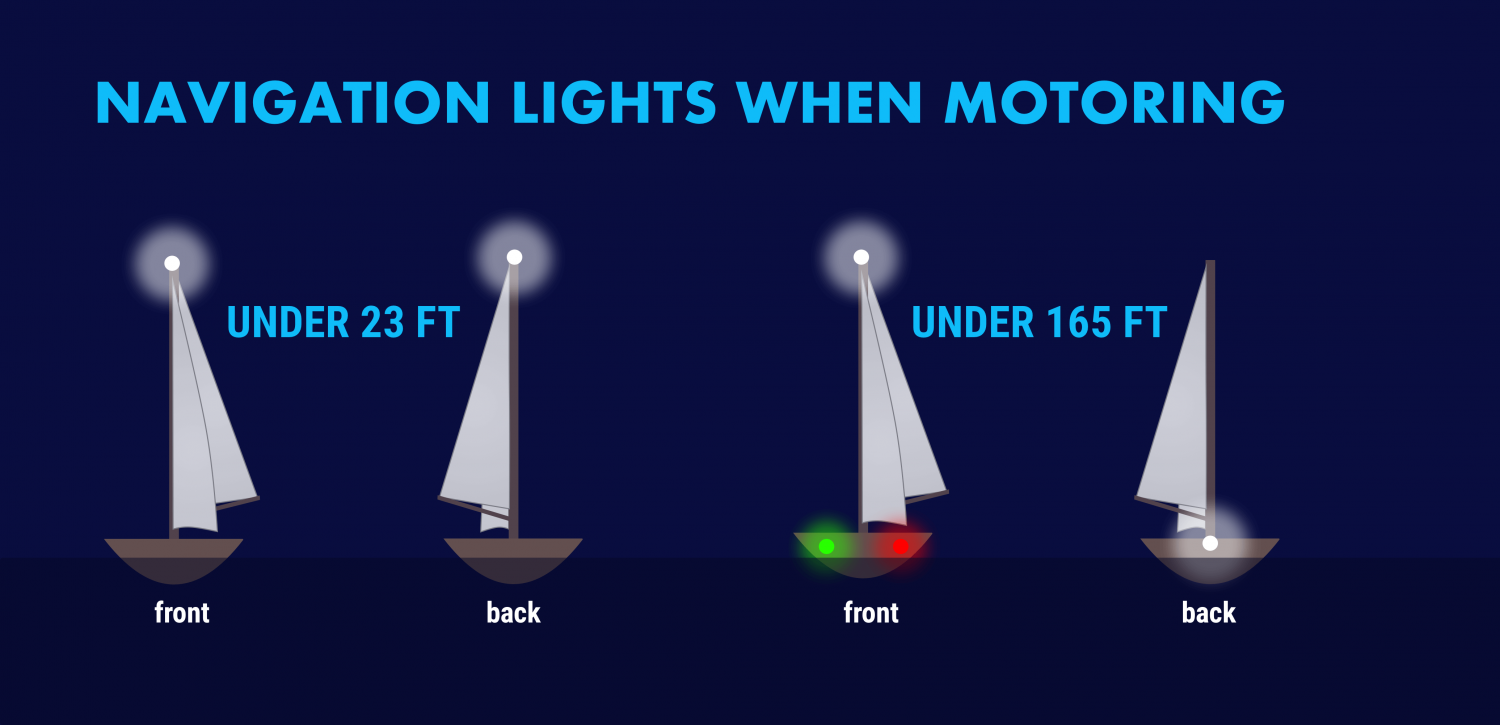
For all navigational purposes a sailboat under power is considered a power boat. This includes motor sailing - if the engine is on and providing propulsion you are on a power boat, even if the sails are up . This applies to navigation lighting, sound signals in fog and limited visibility, and rights of way.
Sailboats under 50 meters under power need to show:
- A masthead light
- Stern light
A power-driven vessel under 23 feet (7 meters) that does not exceed seven knots of speed may display an all around white light, though sidelights should be used if available.

The USCG has published its own "Rules of the Road" that are based on the COLREGS. In addition, it has rules for the "Inland Waterways" for rivers, inland lakes and the Great Lakes.
The good news is this has no impact on what you have to do with your own boat.
They mostly relate to lighting changes on towed vessels like barges and tugs. For example, a vessel towing or pushing another vessel in the ocean under COLREGS shows two masthead lights, sidelights and a stern light, whereas in Inland Waterways the towing or pushing vessel displays two yellow towing lights instead of a white stern light.
If you sail on lakes, rivers or the Great Lakes where towed commercial traffic is common you should learn the inland lights, but coastal or ocean sailors will never see these.
When you anchor outside a designated mooring field, you should display an all around white light at the masthead or as high in the boat as practical.
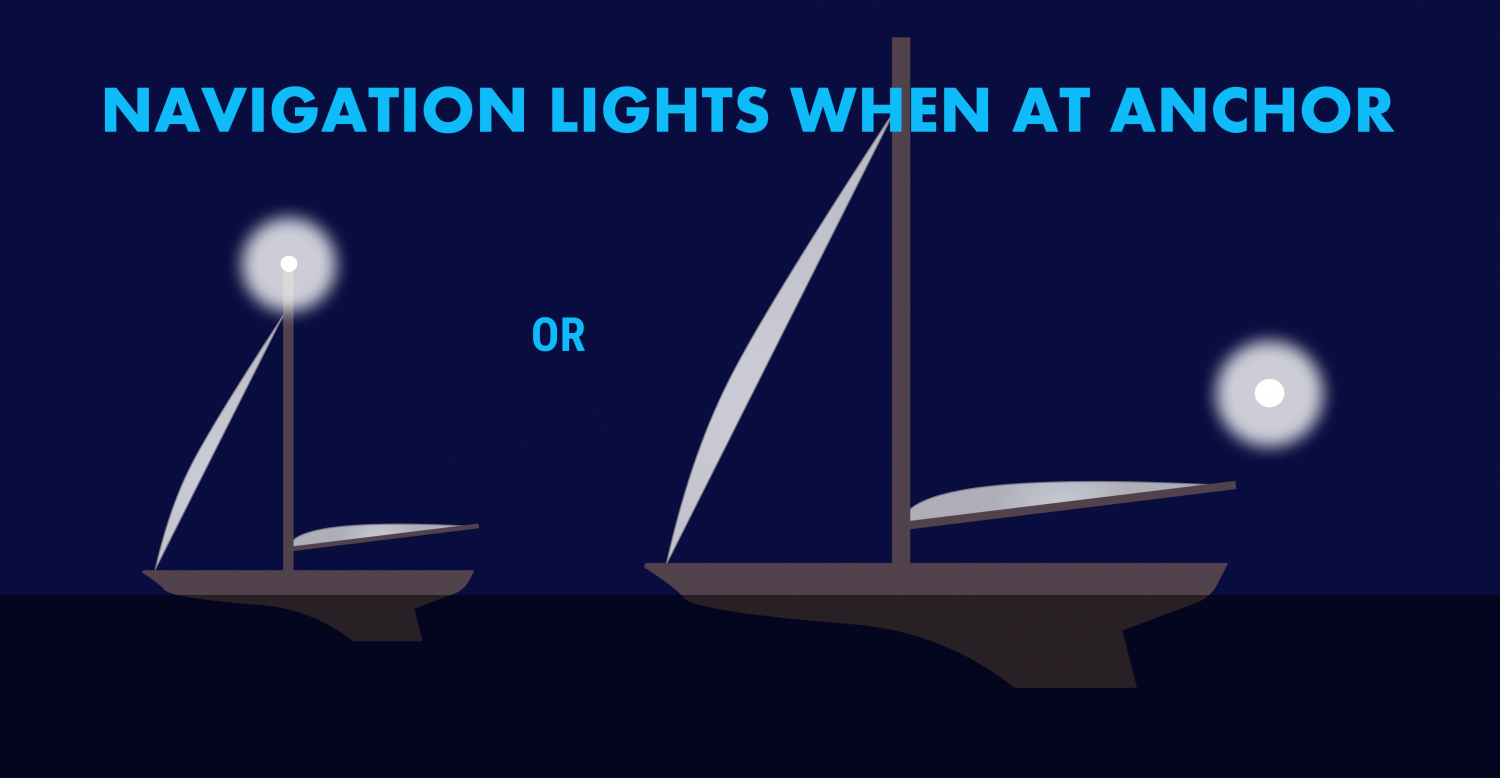
If your boat is large and has a very tall mast, you may wish to display another light closer to the waterline. Boats approaching in the dark may not see a light on a mast sixty or seventy feet in the air when they are close to your boat.
We use a simple garden path light on our stern when we anchor, left in a rod holder or flag socket. It comes on automatically at dusk and is a cheap and easy way to be more visible. There is no specific rule stating you can not display more lights than required, or the nature of any lights beyond the required all around light.
The COLREGS also specify that a round black "daymark" should be displayed in the rigging of any vessel at anchor. Very few small vessels observe this, however it is the correct display for a vessel in an anchorage.
If you tie to a mooring in a marked mooring area you are not required to display anchor lights, but there is no harm in doing so.
The other important reason to know your lights is to figure out what's going on around you at night. The water may be ablaze with white, red, green and other lights at night and they are your first key to avoiding collisions and problems.
All combinations of lights for fishing boats, commercial vessels, and so on are outside this post‘s scope. The odds are small you will encounter a submarine, seaplane or hovercraft at night, but there are regulations regarding specific lighting for each of those vessels!
There are a few fundamentals to help you figure out what that is you see on the horizon, which way it is going, and whether it is a danger to you.
Port Wine is Red
The fundamental rule is that red sidelights will ALWAYS be on the port side of a vessel, and green lights will always be on starboard. However, some vessels can use all around red and green lights for other purposes, though those will be higher than sidelights.
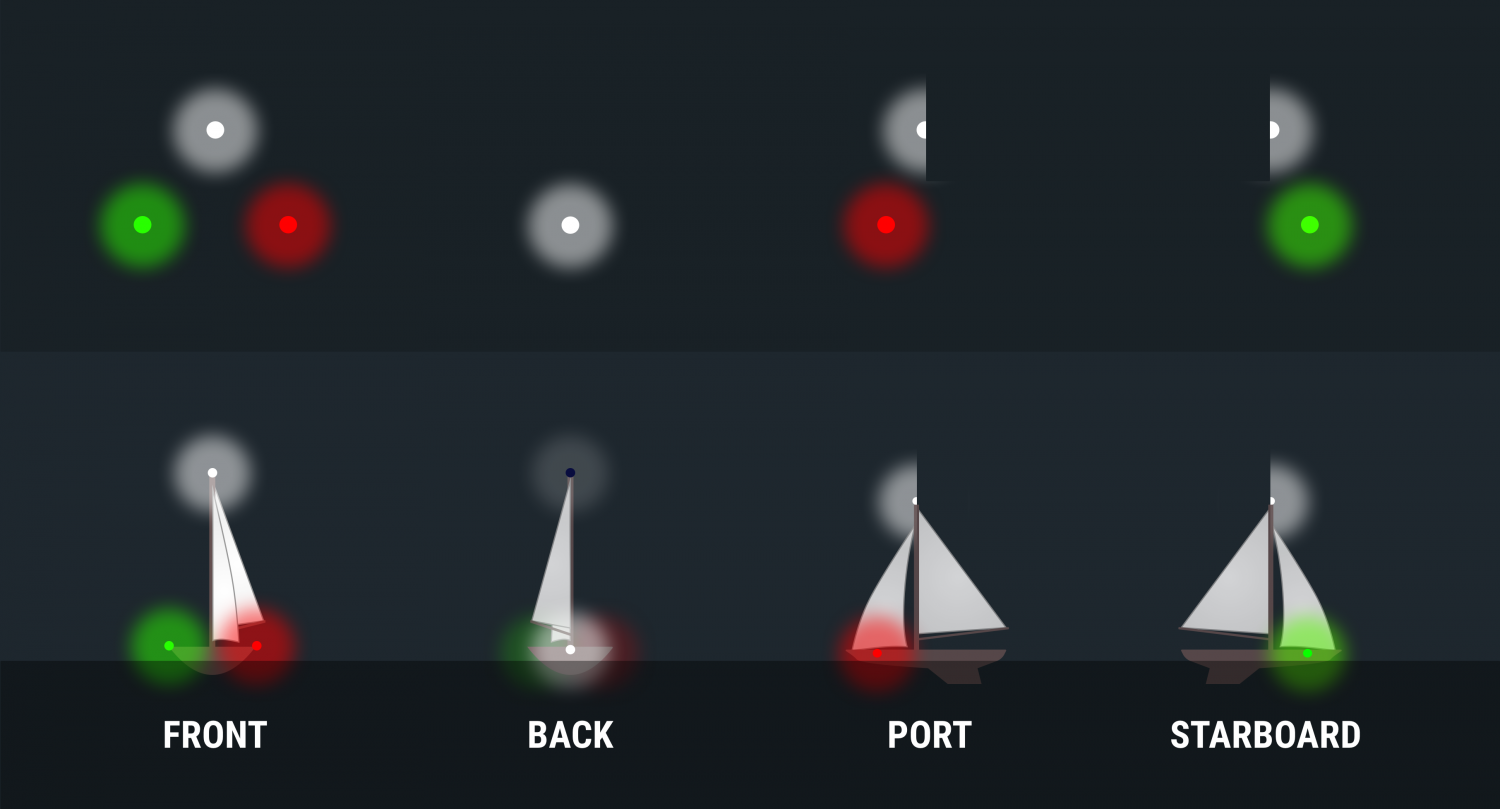
The light‘s on a ship is not important, some large tankers and freighters will have their sidelights far aft and put them on the superstructure for better visibility. It is not safe to assume that sidelights you can see are on the bow of large vessels .
When you can see the color, you know which way the bow is pointing. If it's red, it's pointing more or less to the left and will travel in that direction. A green light shows it is heading more or less to your right.
If you can see the red and green lights at the same time, you are looking directly at the bow of the vessel. When you are far away, this isn‘t as alarming as if you are close crossing. Seeing red and green lights together on a vessel is something you never want to see for long.
Be aware of red and green lights used in combination with other red, green and white lights. These may not be running lights and could have other significance.
Tankers, Freighters and Large Ships
Tankers, freighters and large ships will have side lights, a stern light and a masthead light. In addition, on vessels over 50 meters there will be a second masthead light further aft and higher than the forward light. The masthead light positions are a better tipoff to the bow direction and how far from the bow the sidelights might be. Remember - on a large vessel the sidelights may not be at the bow or even close to it.
USCG Inland Rules allow for a second all-around white light on large vessels on the Great Lakes instead of a second masthead light.
Fishing Boats
Fishing boats engaged in fishing will have more complex light displays. When they aren't fishing, they will show lights like any power vessel, but Rule 26 spells out light combinations that vary by the fishing activity being done. In general:
- Boats which are Trawling but not making headway will display a green all-around light over a white all-around light , and a masthead light aft of these lights. Boats making headway while trawling will show these lights, plus sidelights and a stern light.
- A vessel fishing other than trawling will show a red all-around light over a white all-around light . When making way they will also show sidelights and a stern light.
- If a vessel has gear more than 150 meters away from the boat, it will show a second all around light in the direction of the gear. The best rule is to give fishing boats as wide a berth as you can at night. They're easy to pick out if you check the top light configurations but their course may be difficult to predict.
Towing and Pushing
Towed vessels can be the most dangerous to cross, but they have the most lights to tell you what is happening. Refer to COLREGS or the USCG Rules of the Road Rule 24 for all combinations You can pick a tow/push vessel out with the following lights:
- Two or three masthead lights in a vertical line. Three masthead lights shows a tow over 200 meters. Additional masthead lights may show for larger tow vessels.
- A towing light (yellow light with the same characteristics as a stern light) directly above the stern light.
- The will also have side lights and a stern light.
- The towed vessel will show sidelights and a stern light. Lighting may vary under USCG inland rules, where towing lights may replace stern lights. Learn these differences if this is your regular cruising ground. If you think there is a tow ahead of you, always go well behind the aft most set of lights. Never go between a tow and avoid crossing ahead if possible as it may restrict their maneuverability.
Special Situations
There are several rare situations you may encounter. As a general rule, if there are a lot of lights and you don't understand them look for the sidelights on a moving vessel. If you can find them and figure out the direction it is moving, it makes the vessel easier to avoid. Stay well clear of lights you do not understand if you can avoid them without risk.
Most of these signals are used by larger, commercial vessels and you will not need them.
They use these light combinations with other light combinations. For example a towing vessel may also be restricted in maneuverability, and a vessel constrained by draft will show running lights if moving.
- Not Under Command - two all around red lights in a single line
- Restricted in Ability to Maneuver - red, white then red in a single line
- Constrained by draft - three all around red lights
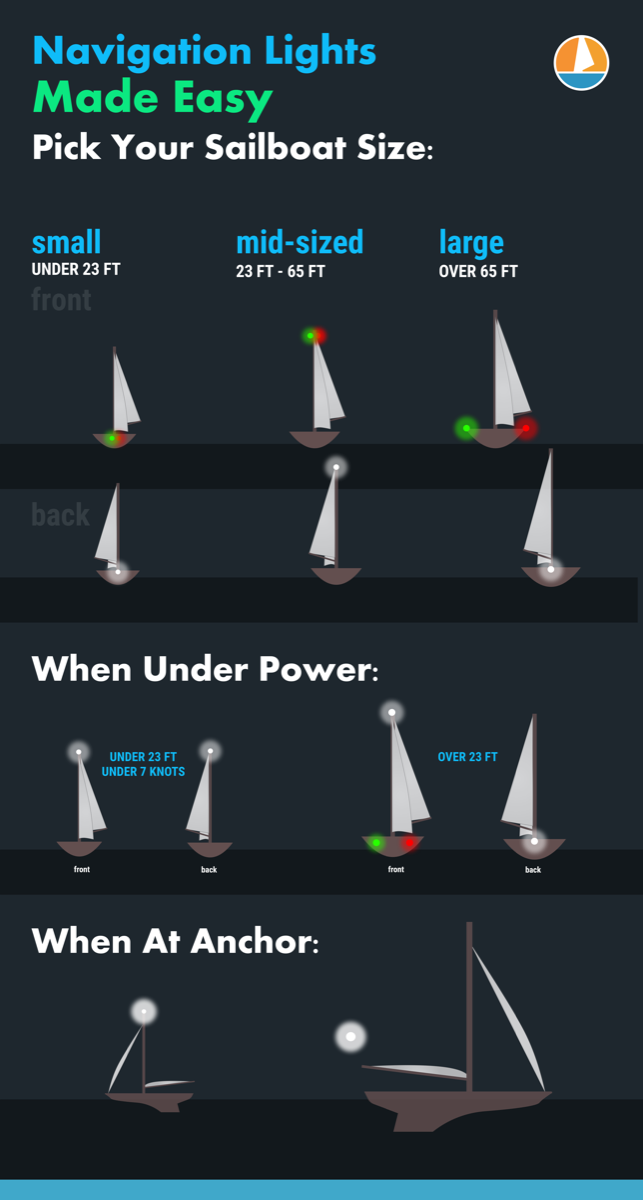
Leave a comment
You may also like, 17 sailboat types explained: how to recognize them.
Ever wondered what type of sailboat you're looking at? Identifying sailboats isn't hard, you just have to know what to look for. In this article, I'll help you.
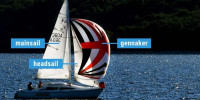
The Ultimate Guide to Sail Types and Rigs (with Pictures)

Please verify you are a human
Access to this page has been denied because we believe you are using automation tools to browse the website.
This may happen as a result of the following:
- Javascript is disabled or blocked by an extension (ad blockers for example)
- Your browser does not support cookies
Please make sure that Javascript and cookies are enabled on your browser and that you are not blocking them from loading.
Reference ID: 62cb95a8-a4ad-11ef-b8bf-cc548929847a
Powered by PerimeterX , Inc.
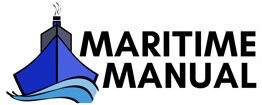
Ultimate Guide To Marine Navigation Lighting
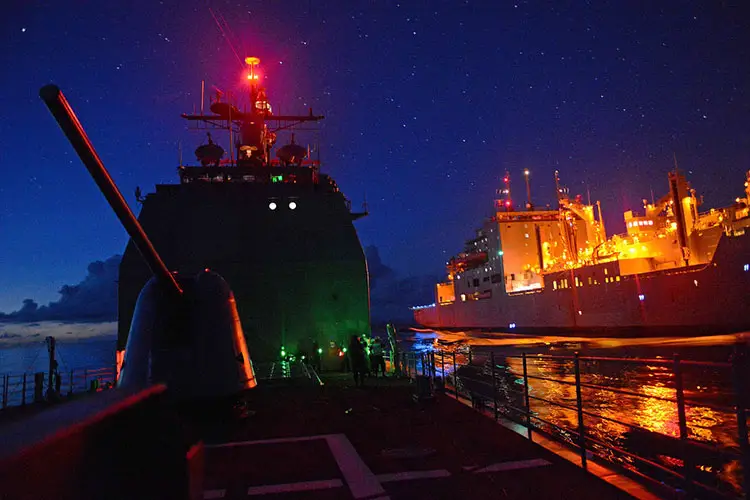
If you drive a car or even ride a bicycle, you might be well aware of the necessity of lighting systems (though in the second case the word ‘system’ doesn’t quite apply) for the safety of you and the people around you. The thing applies just as well for ships. But since they are much larger than a car, the lighting system or navigation lights on ships is a little bit more complicated as well. Marine navigation lighting is also one of the most critical aspects of nautical studies.
It is mandatory for boats of all sizes to have a navigation system . This is to make sure that the chances of any significant accident are minimized. The United States introduced the system in 1838, and the United Kingdom followed suit. Before being internationally adopted in 1897 suitable guidelines were established by the International Maritime Conference which was established in 1889. Three colors were chosen that were to be used for the light colors. They were red, green and white. This was based on a set of rules specified by the US and are followed around the world to this date.
This article discusses the different rules and regulations of using navigation lights, their importance, and also some basic marine navigation lighting systems along with their positions and ranges.
Marine Navigational Lights, Rules and Regulations
A standard pattern of marine navigation lighting is followed for the identification of both the vessel as well as the IALA buoyage system at night. If you are required to move from sea to a channel you need to have a list of all the IALA as well as the other fixed navigational lights that are visible on entering the channel. This includes distant lighthouses as well.
If you also make a note of the inland features like the radio and television transmitter masts it will benefit you because they act as good navigational aids due to their height and warning lights.
The helmsman should not be using any bright light source in the cockpit area and should rather take the aid of red lights and very dim white lights in the galley and navigation area. This is because he needs to preserve his night vision so that he can accurately interpret both the buoyage marine navigation lights as well as the boat navigation lights of other vessels.
The nautical almanacs contain the details of each and every visible maritime light signal coming from navigational markers that are both inside and outside the channel.
All the details about any particular light can be found in a published list or on a marine navigational lights chart: its color, period, and in some cases even the elevation and range of the beacon. Use the chart to keep a tag on the lights you are passing by putting a tick mark on the lights that you are about to pass and as the boat sails past, the tick is checked.
You will get two visual clues to figure out how far you are away from a buoy. The light will elevate from the horizon at 0.5 nm and at about 200m, the light will reflect on the surface.
Position of Boat Navigation Lights
Most of the variations that can be found in the different vessels can be read about in most almanacs. At the very basic level, a vessel needs to show a red light to port and green light to starboard. Depending on the size of the vessel, one or more colored or white lights are used as well.
For vessels that are 12 ft in length or shorter, the navigation lights must be visible from a range of one nautical mile and for the ones that are longer than 12 meters the required visibility range is 2 nautical miles. From 5 degrees above to 5 degrees below the horizontal happens to be the required minimum intensity in a vertical sector.
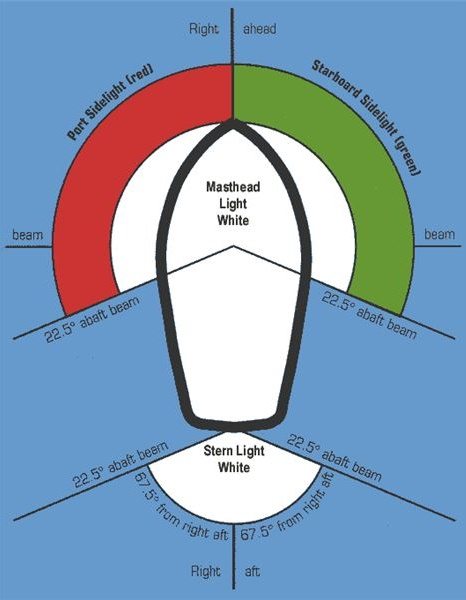
International Navigation Rules state that the boat navigation lights should be placed above the uppermost continuous deck. In case separate fixtures are used for the red and green sidelights, the masthead or all-round white light is placed as close as possible to the vessel’s fore and aft centerline. The masthead or all-around light needs to be positioned at least 1 m or 3.3 ft above the sidelights.
Following are the basic positions of navigational lights. We will discuss the same in greater detail ahead.
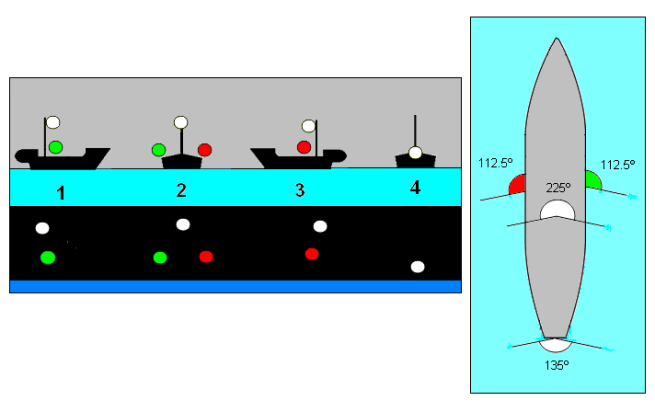
Also read: What Is A Marine Sextant?
Boat Navigation Light Regulations
Several rules and specifications are related to the type, size, layout, arc, and distance of visibility of boat navigation lights used by all vessel types which are collectively known as the International Regulations for Preventing Collisions at Sea or COLREGs . The navigational lights used are known as ‘COLREG lights and shapes. A boat might be anchored or underway, under sail or power, or fishing or trawling. These various situations can be communicated through multiple combinations of boat navigational lights.
In addition to the primary navigation lights, vessels may also display one or more steaming lights. These lights are very useful for it gives details about the various aspects of the ship like whether it is in the sail or under power, the direction in which it is going and, in some cases, even the size of the vessel. If a ship is engaged in a specific task that might involve certain restrictions, that too can be indicated with some extra boat lights.
Always maintain the lighting system and display the correct navigation light combination to make other vessels in the vicinity aware of your course and state as to whether your vessel is under power or not. If you follow this a considerable amount lowers the chances of a collision. Here is a list that you might use to familiarise yourself with the basics of the lighting system.
- Basic Navigation Light White Light : Small dinghies that are 7m or less in size are required to carry a torch having a white light that can be flashed when needed.
- All-Round White Light: An all-round white light is expected to be displayed by a small boat, up to 7ft long that is under power and can go beyond 7 knots of speed. This light must be visible at an angle of 360 degrees and from two miles away. An all-around white light is also used when the boat or vessel is at anchor but not at a designated anchoring area. This is to make sure that the ship is visible to all the nearby ships to avoid any accidents.
- Stern and Combined Side Lights : A stern light is a white light that is installed at the end of a boat. A vessel that is over 7 m or 23 ft in length is expected to show red and green sidelights when sailing. Each of these lights needs to cover an arc of 112.5°. The sidelights may be combined in one lantern at the bow when below 25 m or 65 ft. The white stern light can be seen over an arc of 135°. These lights need to be visible from a distance of a mile and need to be placed 39 inches below all white lights for boats of lengths equal to or less than 12 ft.
- Masthead Light : A combination of sidelight and stern light in a tricolor combination may be used sailing yachts of heights 20 m or lower. A masthead light is required by vessels of lengths between 39.4 ft and 65.6 ft. It is placed in the masthead whose height provides excellent visibility. Still, stern lights and sidelights should be fitted separately in case of or use under power along with steaming light. This kind of light needs to be visible across an angle of 225 degrees and from a minimum distance of 2 miles.
- Separate Lights : The displaying of the tricolor masthead light is not allowed in the case of yachts that are longer than 20 m or 65 ft. Instead, they use them separately. Often on large sailing vessels, these all-around, red over green lights are present. These red and green sidelights need to be visible from a distance of one mile and across an angle of 112.5 degrees.
- Steaming Lights Combined Lights : A combination of the masthead and stern light are used in the case of power crafts that are less than 20 m or 65 ft in length. The arrangement is present at the bow.
- Single Steaming Light : Visible over a 225 degrees arc, a masthead steaming light is used by power-driven vessels that are up to 50 m or 160 ft long. Separate stern lights and sidelights are used in case of a length exceeding 20 m or 65 ft.
- Two Steaming Lights: Power-driven vessels that span over 50 m or 160 ft in length display two masthead steaming lights. The forward light placed lower than the aft light with both of them being visible over an arc of 225° with the sidelights and separate stern light.
The area of the nautical lighting system is a precise business and requires some amount of study and a good deal of responsibility. It is because its application forms a core element in safe marine navigation.
Similar Posts
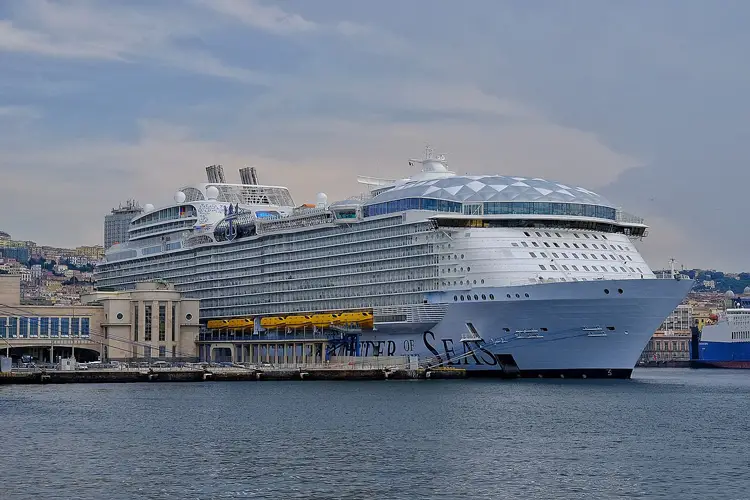
Wonder of the Seas Deck Plan
In 2022, the world saw another engineering marvel – Wonder of the Seas – Royal Caribbean International’s flagship. The cruise is a triumph of maritime engineering and luxury. Constructed at the Chantiers de l’Atlantique shipyard in Saint-Nazaire, France, this vessel represents the pinnacle of cruise ship innovation. Pics courtesy: https://www.royalcaribbean.com/ Wonder of the Seas Features…

Amazing Magdeburg Water Bridge: Longest Navigable Aqueduct in the World
The Magdeburg Water Bridge in Germany is the longest navigable aqueduct that connects the Elbe-Havel Canal to the Mittelland Canal, crossing over the Elbe River. What comes to your mind first when we say a bridge? Right, the first thing that comes to our mind is that a Bridge is a structure that acts as…
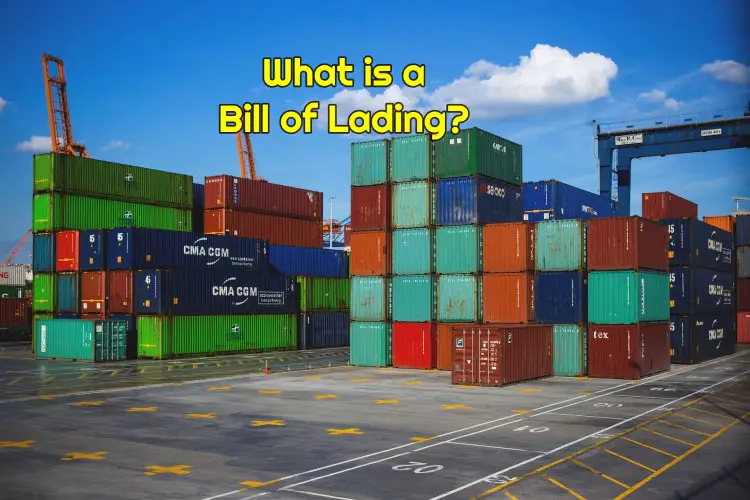
What is a Bill of Lading (B/L or BoL) in Shipping?
What Is A Bill of Lading? Bill of Lading Definition Bill of lading is a document issued by a carrier to a shipper, confirming the particular good that has been received on board as cargo transporting it to a destination and delivering it to the consignee. The word ‘lading’ means ‘loading’. It refers to the…

What Are The Causes And Effects Of Ocean Pollution?
Ocean pollution has become a serious problem confronting the world. It cannot be ignored for long. We know that oceans cover most of the surface of our planet. In fact, more than 70% of the entire Earth’s surface is covered by some kind of a water body. Oceans and other water bodies are very important…
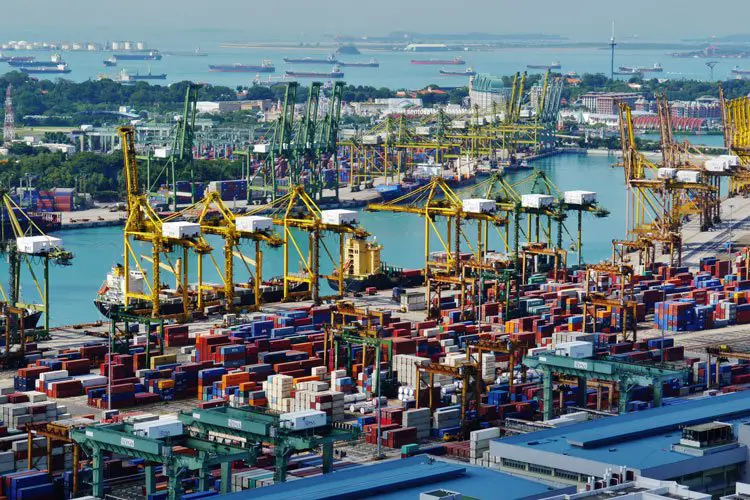
Major Container Ports in the World
Container ports (also known as container terminals) are specialized marine port facilities that focus on container shipping and transshipment. Terminals are crucial in the global logistics and supply chain business because they determine the speed at which commerce and trade may occur. Terminals that are efficient and streamlined run smoothly, minimizing ship wait times and…
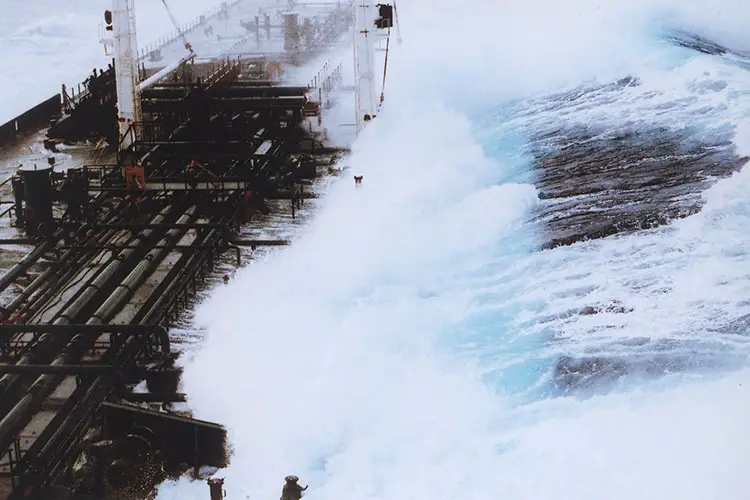
What Are Rogue Waves?
Leading a successful voyage of a ship is a difficult and challenging affair especially in the middle of the oceans when the waters are most treacherous and perilous than ever. The ships could meet with any kind of obstacles like storms, icebergs, or giant waves which may lead to capsizing. This article discusses one such…
Leave a Reply Cancel reply
Your email address will not be published. Required fields are marked *
Save my name, email, and website in this browser for the next time I comment.
This website uses cookies to improve your experience. We'll assume you're ok with this, but you can opt-out if you wish. Read More

IMAGES
COMMENTS
Navigation lights are used to prevent collisions at night or in times of reduced visibility, and are an essential tool in keeping you and your vessel safe. Nav lights allow you to see other nearby vessels, and allow other vessels to see you.
Boat navigation lights are crucial for safe boating, especially during low visibility conditions such as at night, in fog, or heavy rain. Understanding the rules governing navigation lights is essential for all boaters, whether you’re a seasoned mariner or a beginner on the water.
For most small vessels, motoring requires red and green (port and starboard) lights, and a white light visible in all directions around the boat. This is almost always a stern light and a masthead light on sailboats. Boats under sail require port and starboard lights, and a white stern light.
How Boat Navigation Lights Work. The right navigation lights for your boat will depend on its size. Navigation lights are required for any of the following crafts during night hours or when there is reduced visibility: • Anchored vessels • Human-powered vessels (kayaks and canoes) • Motorized boats • Non-motorized boats
Navigation lights are required for boats operating at night, between sunset and sunrise, to ensure visibility and avoid collisions. What types of navigation lights are there? Common types include sidelights (red and green), stern lights (white), masthead lights, and all-round lights.
This article discusses the different rules and regulations of using navigation lights, their importance, and also some basic marine navigation lighting systems along with their positions and ranges.